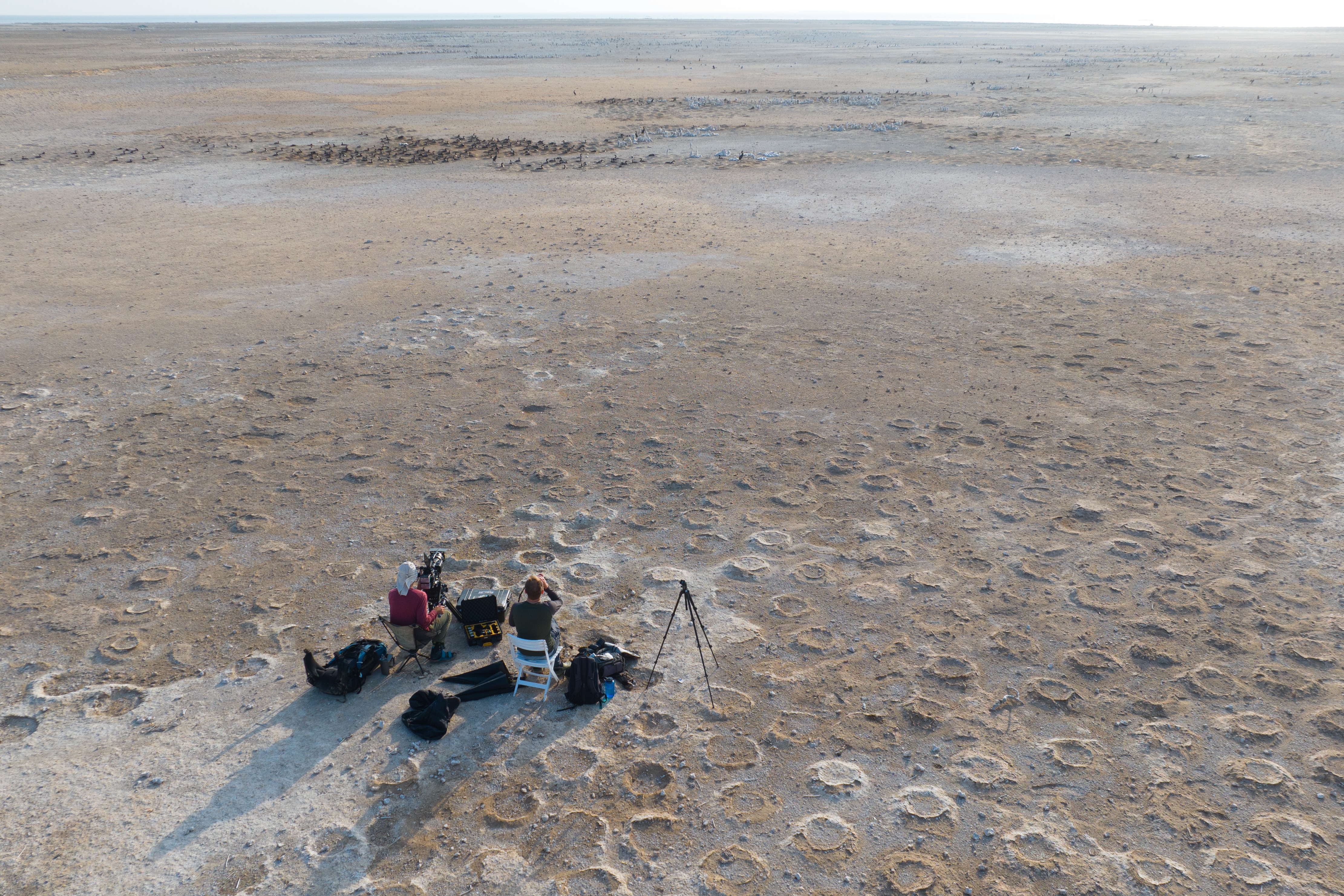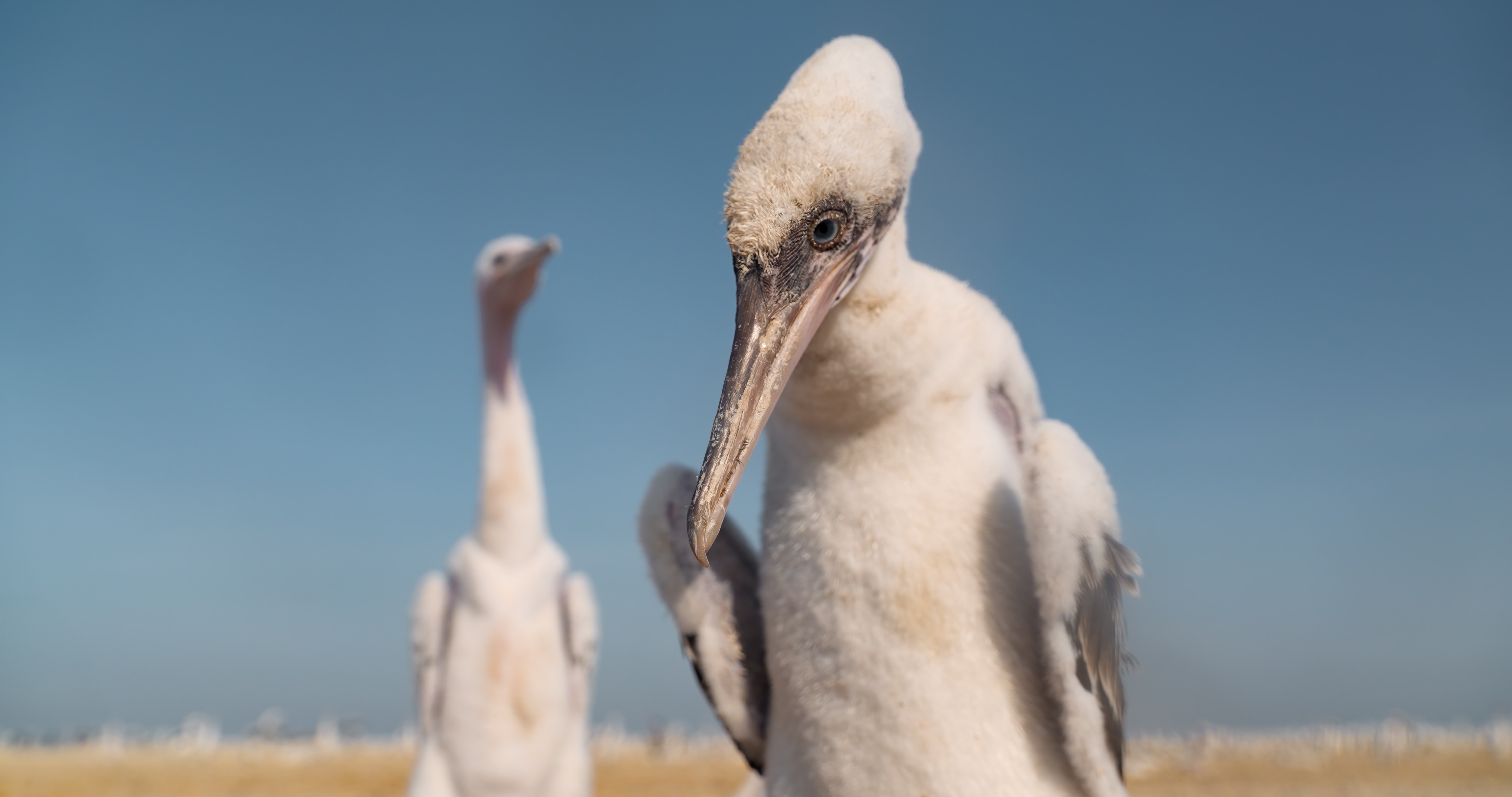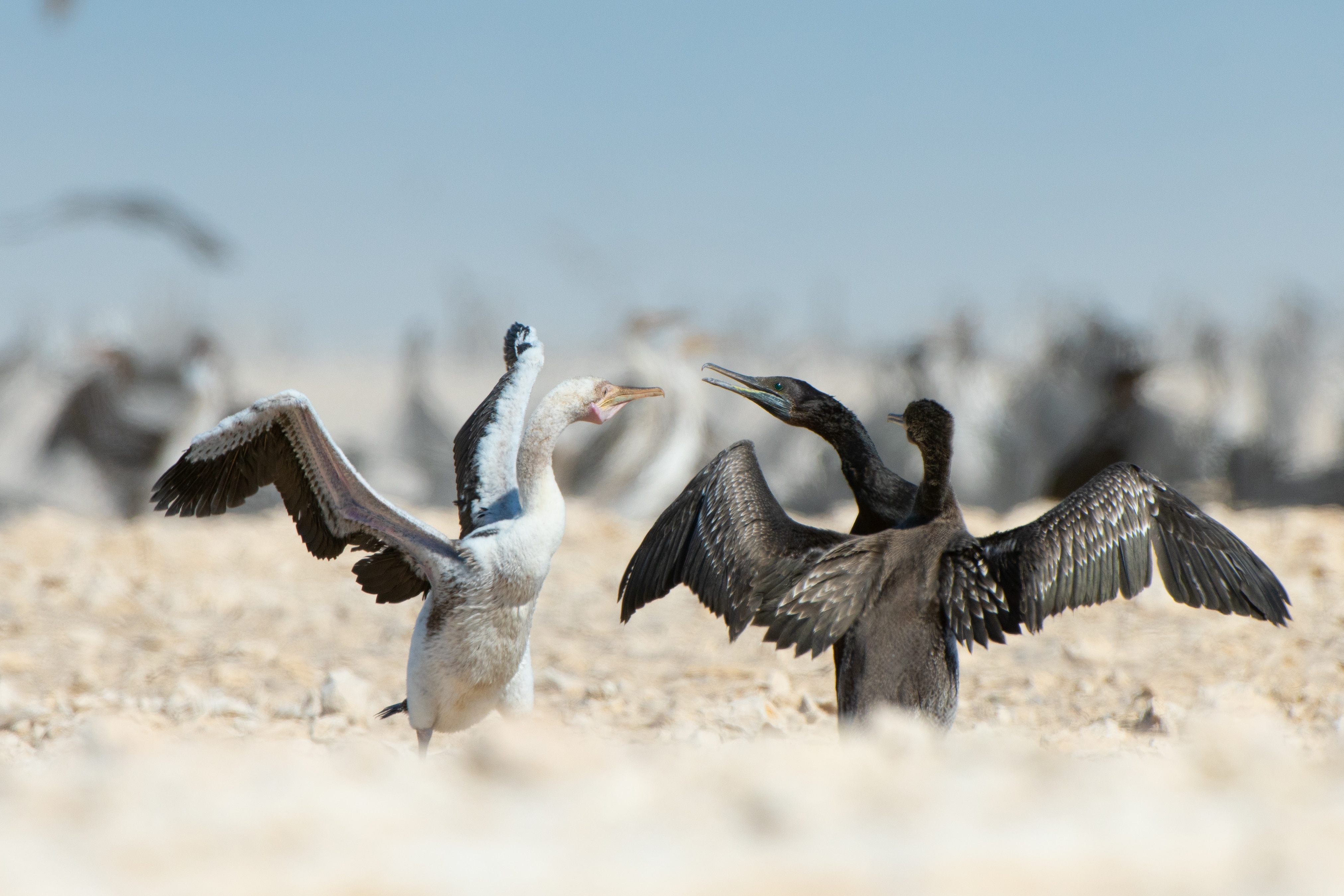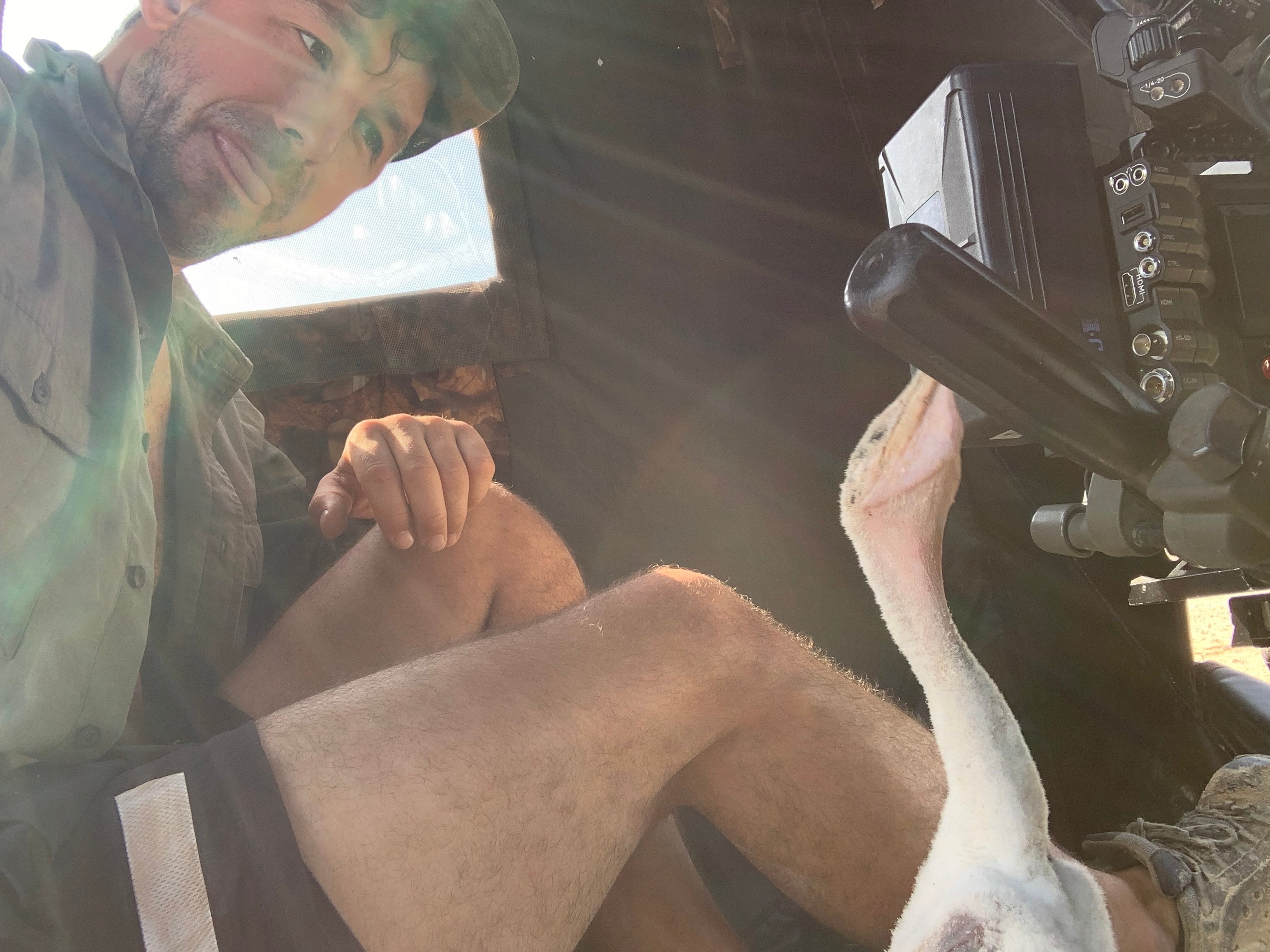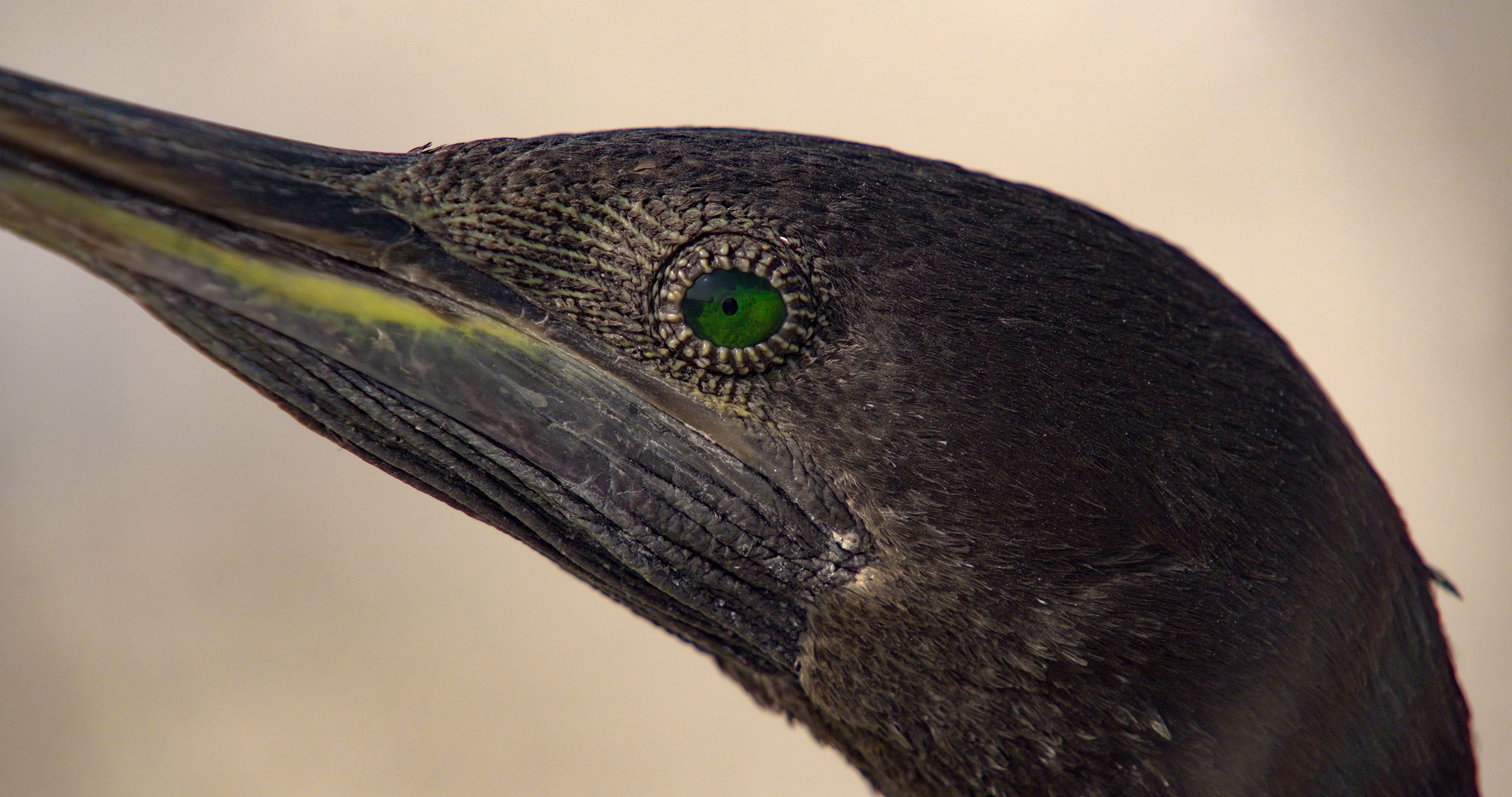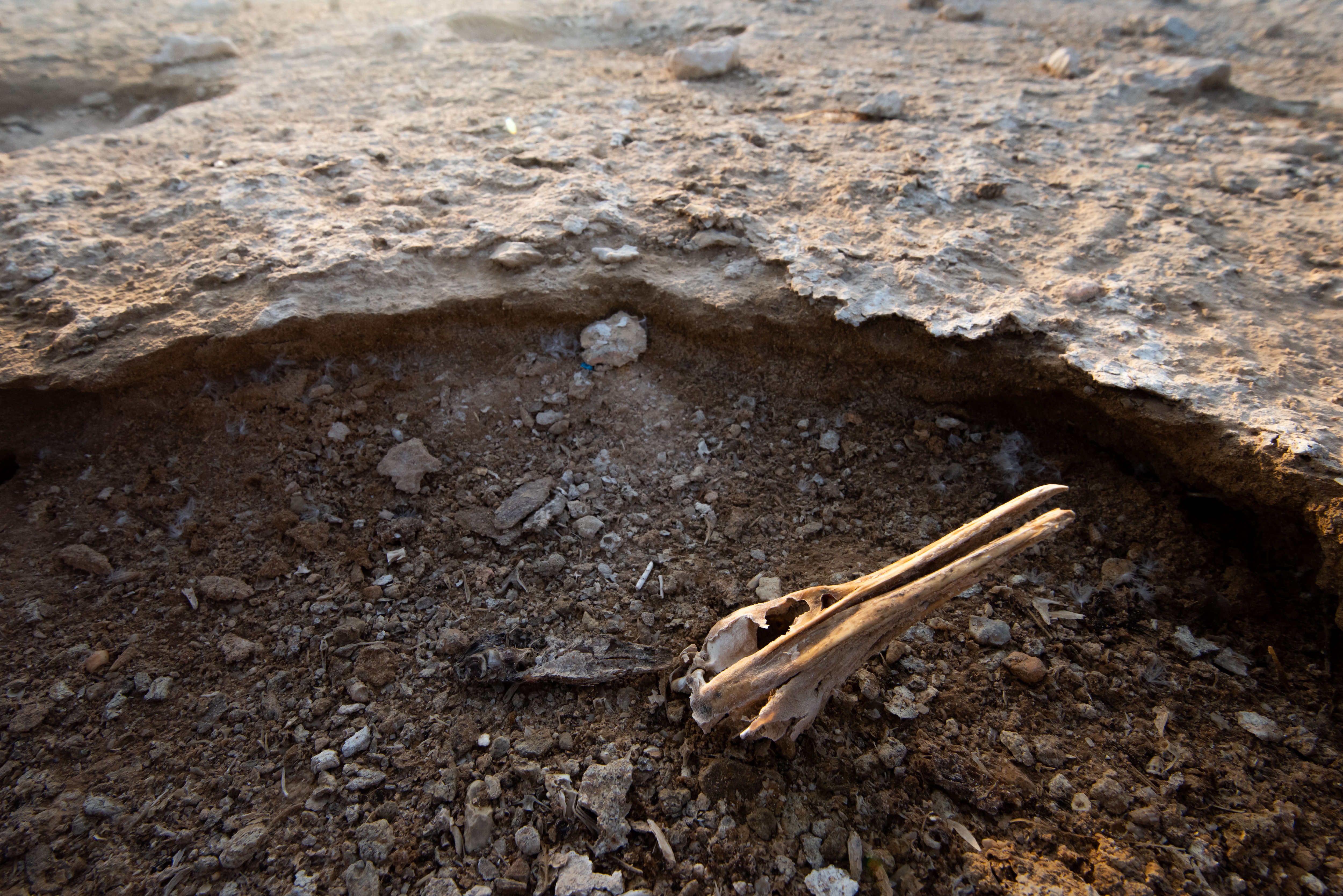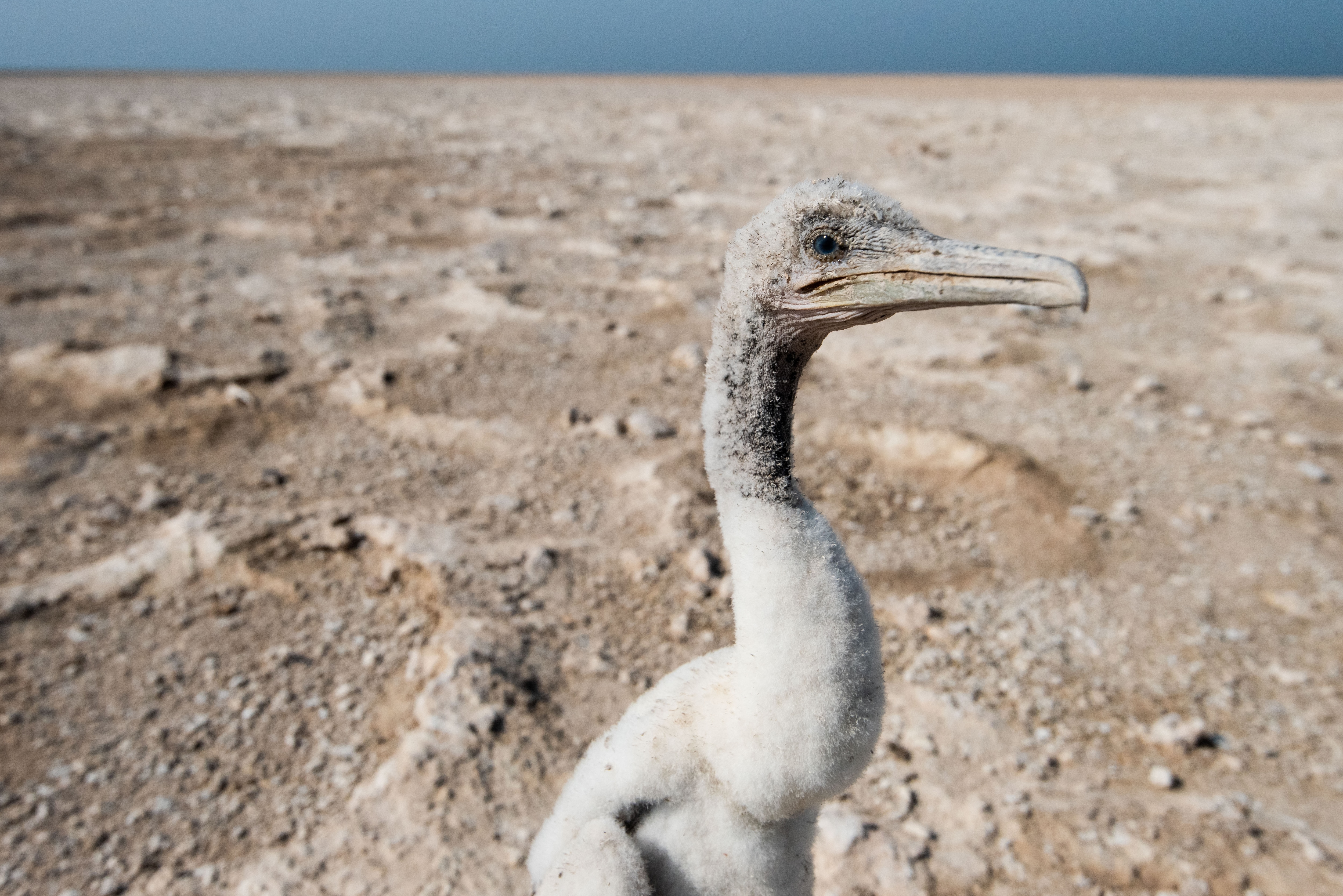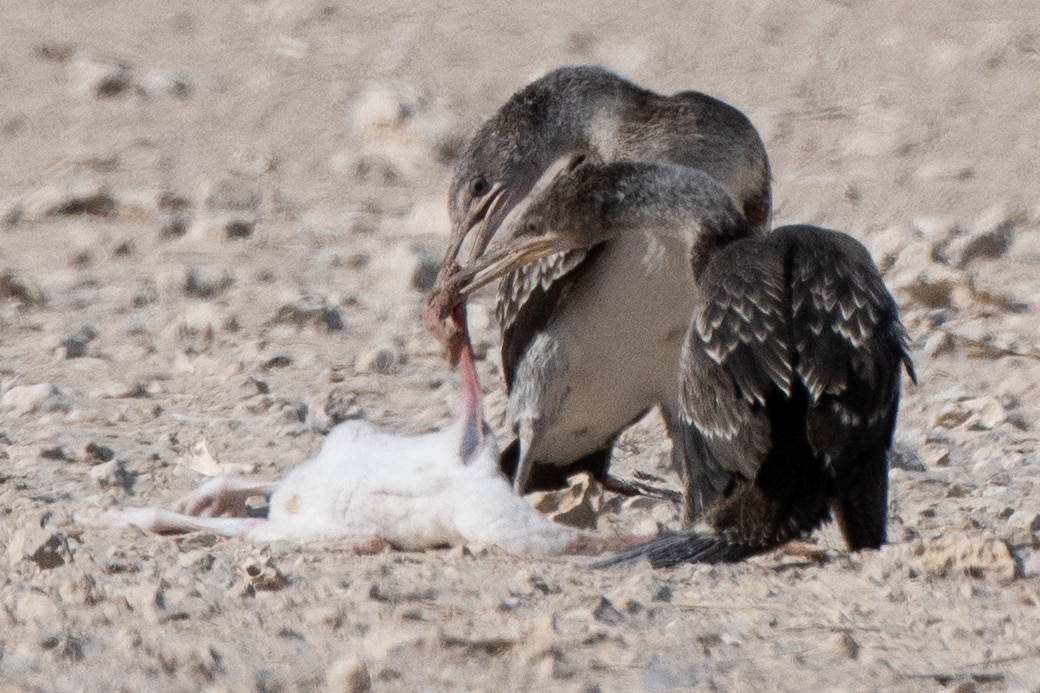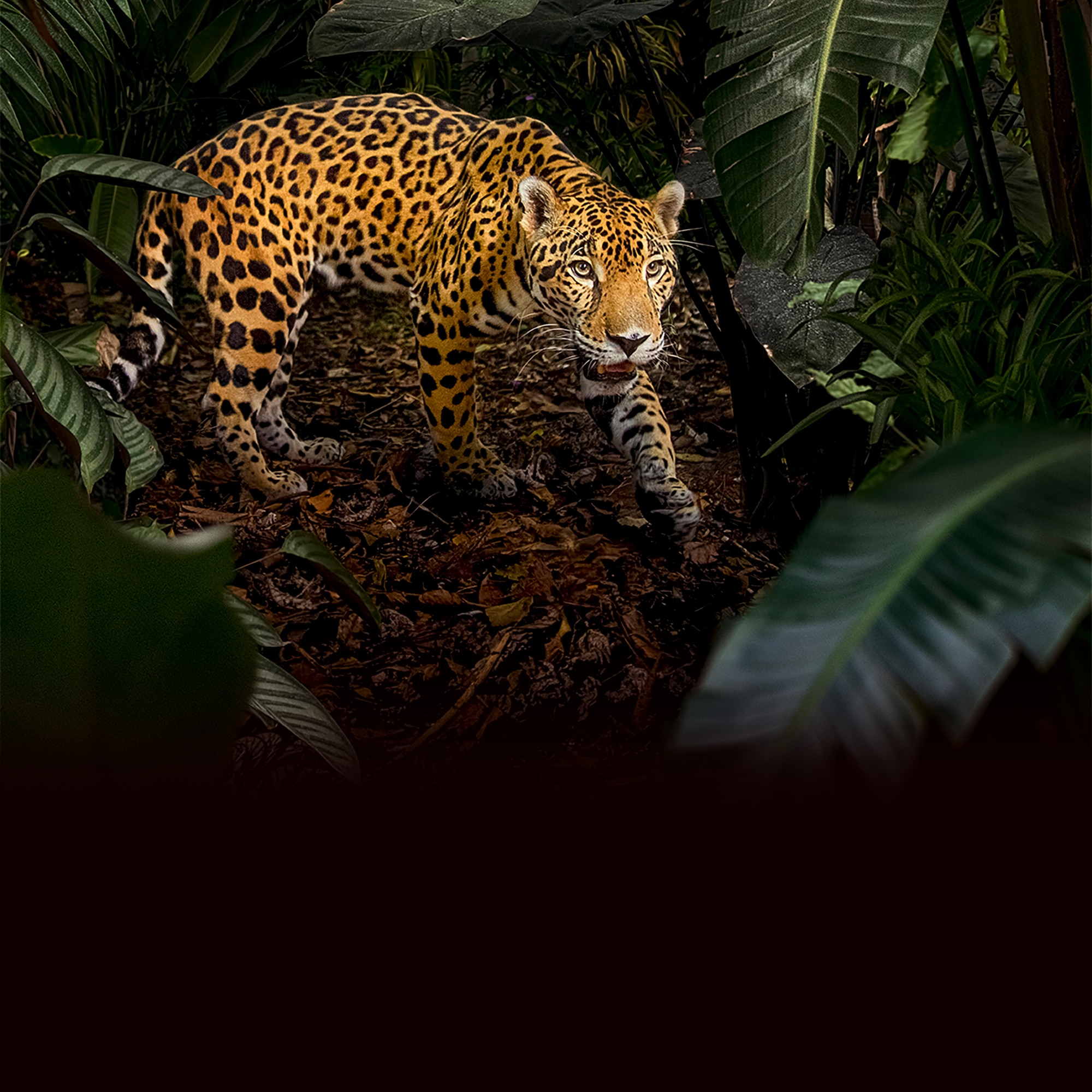A few of these chicks realise there is food on the island – if they’re prepared to turn to cannibalism. For us, however, identifying these individuals took days of careful observation. Some would peck at anything that looked out of place, be it a pebble or a plastic bottle, and harass random adults that returned to the colony to feed their chicks. Others, however, had a certain look in their eye, and would march ominously from nest to nest in search of a meal. More often than not, a curious peck at an unprotected chick would prompt some movement, surprising the attacker and preventing any conflict escalation.
At last, after days of observation, we witnessed one particularly cunning bird grabbing an abandoned chick and swallowing it whole. Over in an instant, it’s one thing to see it, but quite another to film. Finally, after countless near-misses, our cameraman Ivo Nörenberg captured the shot. How do you react when you’ve just filmed the extraordinary yet heart-breaking behaviour of a chirping chick disappear down the gullet of its older counterpart? A triumphant “Yes!” followed by a contemplative silence was our answer.
